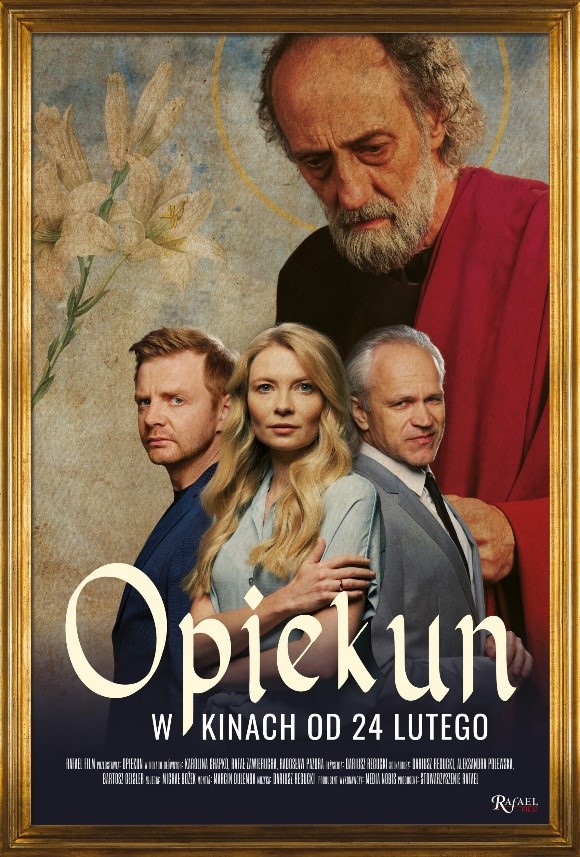St. Joseph Doesn’t Take Any Breaks
I just returned from Poland – a very short visit but intensive and rich. The main reason for my trip was a Lenten retreat for priests in the Polish mountains and to visit my 88-year-old father and family. I was also blessed by attending many interesting meetings and in visiting the Shrine of the Black Madonna in Czestochowa. My sister encouraged me to see the film “Guardian” that was just released in the theaters. The film tells the story of a young couple going through a serious marriage problem. They live in Kalisz, a city known for a centuries-old image of the Holy Family in which St. Joseph is especially venerated.
In the film, Robert, the main character, works for a local radio and TV station and, together with a female colleague, has to prepare a documentary about the shrine of St. Joseph. He follows the authentic stories of people touched by the intercessions of St. Joseph. The work that he undertook only at the request of his boss forces him to engage himself more and more in this saint. He discovers how St. Joseph becomes an important and sometimes decisive factor in the life of many people he meets while preparing the program. He himself seems to be an agnostic since his answer to the question: “Do you believe in God?” is “I was baptized”.

One story – a true story witnessed by Robert in this film – relates to Americans, specifically an American Army. Allow me to relate it to you. Near the end of World War II, Germans decided to liquidate many concentration camps that were meant for the murder of all their prisoners. In the Dachau concentration camp, not far from Munich, Bavaria, which held hundreds of Catholic priests among others, the Polish priests initiated a novena (a prayer for 9 consecutive days) to St. Joseph. They also entrusted their lives to the Immaculate Heart of Mary and the Sacred Heart of Jesus. They prayed this novena to St. Joseph for the intentions of saving their homeland, their families, and themselves. On April 22, 1945 — just two weeks before Germany surrendered and the last day of the novena — they offered themselves specifically to the guardianship of St. Joseph of Kalisz. The priests pledged to spread the devotion of St. Joseph, and after being saved, to pay homage to him during a pilgrimage to the Kalisz Shrine of St. Joseph.
The Germans’ plan for the liquidation of the Dachau camp was set for April 29, 1945 at 9 pm, and a fire was supposed to be set at that time as a signal for the German SS “Wiking” military division to burn the camp to the ground and to kill all of its prisoners. However, four hours before the order was carried out, the camp guarded by armed men was taken over by a handful soldiers of General Patton’s American Army, which was heading for Munich. Right after the liberation of the camp, the American unit commander summoned everyone to pray the “Our Father” in thanksgiving. The rescued priests and other Catholics sang hymns in gratitude. It became clear to the priests that they owed their lives to the intercession of St. Joseph.
After the war, the rescued priests came as they promised to the Shrine of St. Joseph of Kalisz in thanksgiving. Since then, they have been returning to the shrine every year. They also founded a special chapel under the church, named The Chapel of Martyrdom and Gratitude.
Returning to the film itself and the story of the married couple, you will have to wait until the film will be available with English subtitles to find out if St. Joseph intervened for that couple as well.
By the way, the screenplay to this film was written by Ola Polewska, my sister-in-law’s first cousin. Ola also has published several dozen books for children and adults about different aspects of our faith. I hope that one day she will visit our parish.
Fr. Mark Jurzyk
